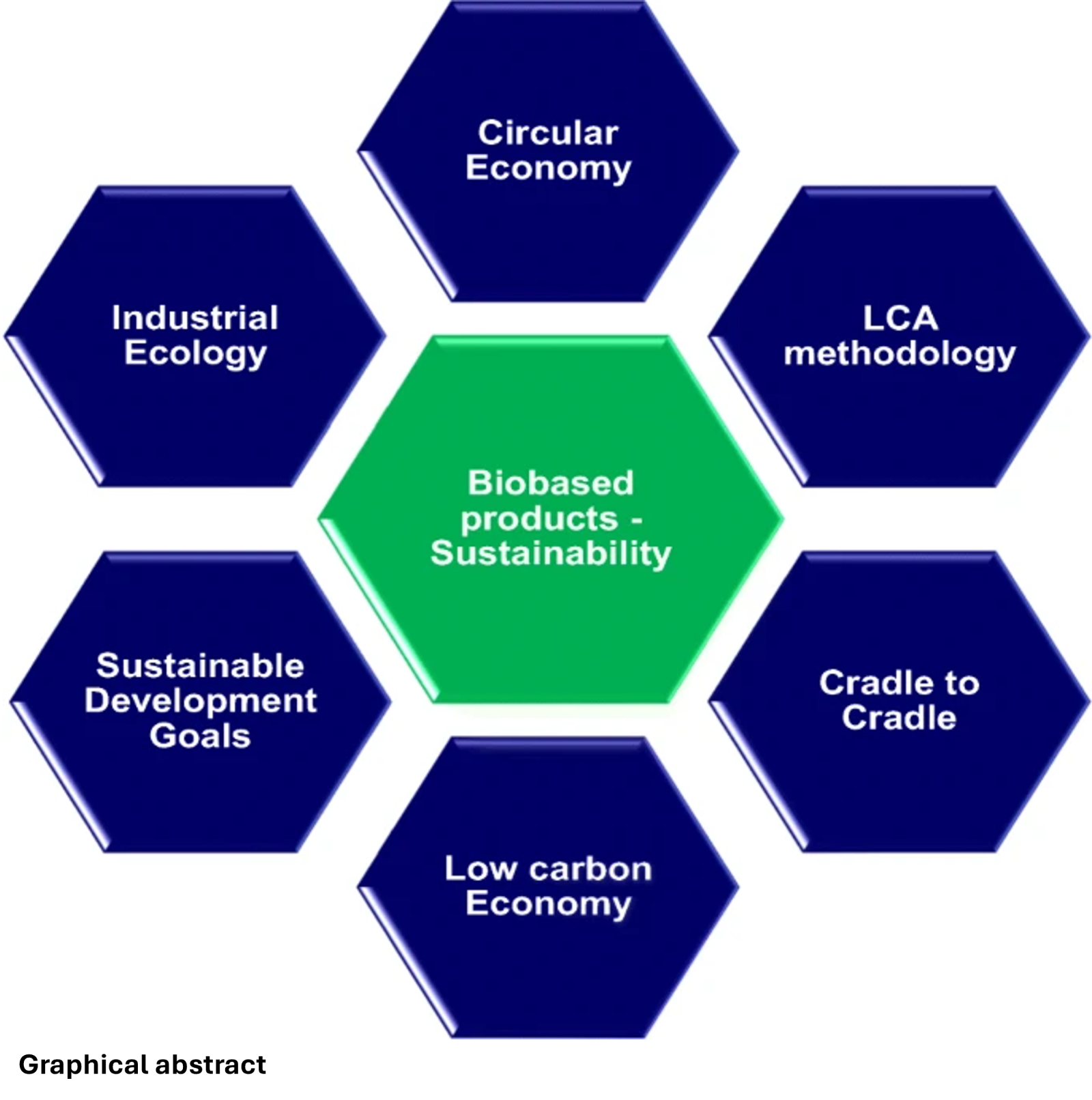September 7, 2020 | Materials Circular Economy | Source |
Introduction: Researchers from the CSIR-Indian Institute of Chemical Technology, India, and the National University of Singapore review how biobased products can advance a low-carbon and circular economy. The study examines life cycle assessment (LCA) and its extension, life cycle sustainability assessment (LCSA), as key tools to evaluate environmental, economic, and social impacts in the expanding biobased economy (BBE). It also addresses the limitations of applying LCA to biobased products and discusses potential solutions, highlighting how circular economy frameworks—particularly the Cradle-to-Cradle (C2C) approach—can strengthen their role in mitigating climate change and resource depletion.
Key findings: The review highlights that although biobased products reduce reliance on fossil resources, their production is not automatically sustainable, as indirect land use change (ILUC) and energy-intensive processing can offset climate gains. LCA helps reveal these trade-offs by assessing emissions, resource use, and end-of-life impacts. Case studies on microcrystalline cellulose and propionic acid showed that electricity and chemical inputs dominate environmental burdens, while process optimization reduces carbon footprints. A holistic view requires LCSA, which combines LCA (environmental), life cycle costing (LCC, economic), and social LCA (sLCA, social) under the triple bottom line model. Linking LCA with circular economy strategies—such as recycling, industrial symbiosis, life cycle gap analysis (LCG-A), and mass balance methods—can strengthen sustainability outcomes. Standardization efforts (ISO/TC 323) are advancing common frameworks to measure circularity, improving comparability and policy alignment. Yet challenges in data quality, boundary setting, and methodology persist. The authors conclude that biobased products must be designed within C2C systems, supported by harmonized metrics and comprehensive LCSA, to fully contribute to a resource-efficient green economy.





